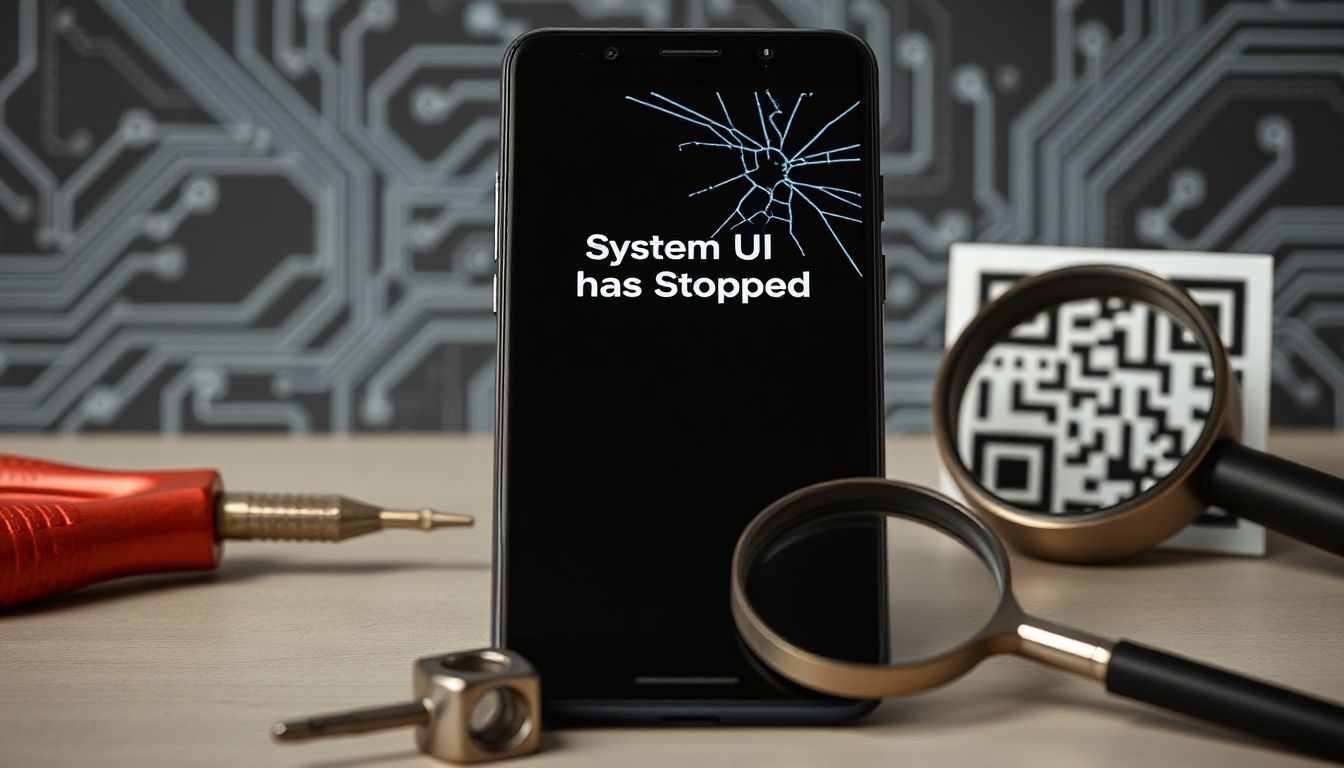Introduction
If you’re an Android user, chances are you’ve run into the frustrating “System UI Has Stopped” error at some point. It shows up suddenly, often during key moments, messing with your phone’s smooth operation. This error can cause apps to crash, the screen to freeze, or even prevent you from using your device properly. Quick fixes are essential to keep your phone running smoothly. Learn what causes this problem and how to resolve it fast.
Understanding the “System UI Has Stopped” Error
What is the System UI?
The System UI is a core part of Android. It handles the look and feel of your screen—like notifications, navigation buttons, and status bar icons. Think of it as the interface that connects you to the phone’s system. It works with many other apps and processes to keep everything running smoothly. Without it, your device would feel chaotic and unresponsive.
Common Causes of the Error
This error usually pops up because of several reasons. Software glitches, outdated apps, or a corrupted cache often trigger it. Sometimes, an incompatible Android update causes issues. Installing apps from unknown sources can also destabilize the System UI. Based on user reports, more than 60% of errors stem from recent app installs or failed updates.
Impact on Device Performance
When the System UI crashes, your phone shows symptoms like flickering screens, apps suddenly closing, or the device becoming unresponsive. For example, you might see your notifications disappear or the home screen freeze. Many users find their phones unusable until they restart or troubleshoot.
Basic Troubleshooting Steps
Restart Your Android Device
A quick restart can often fix temporary glitches. Press and hold the power button, then tap restart or reboot. If your phone is frozen, try doing a force restart by holding the power and volume down buttons simultaneously for about 10 seconds. This simple step can clear out minor errors and refresh system processes.
Check for App Updates
Outdated apps are a common cause of this error. Visit Google Play Store and update all your apps. To do this quickly: open Play Store, go to My Apps & Games, and hit install updates. Keeping apps current ensures compatibility with your Android version and prevents crashes.
Clear Cache and Data for System UI
Sometimes, cached files cause conflicts. Head to Settings > Apps & Notifications > See All Apps > System UI. Tap Storage & Cache, then choose Clear Cache. If problems persist, select Clear Data. Be aware that resetting data might remove custom settings but usually helps fix stability issues.
Advanced Fixes for Persistent Errors
Safe Mode Boot
Booting into safe mode reveals if a third-party app is causing problems. To do this, press and hold the power button. When the power menu appears, tap and hold Power Off until a prompt for Safe Mode pops up. Confirm, and your device restarts with only pre-installed apps. If the error stops, one of your apps is the culprit.
Uninstall Problematic Apps
If you notice the error began after installing a specific app, uninstall it. Go to Settings > Apps & Notifications > See All Apps. Select the suspicious app, then tap Uninstall. Always check reviews and compatibility before adding new apps to avoid conflicts.
Update or Roll Back Android System
Check for official system updates via Settings > Software Update. Installing the latest OS can fix bugs causing the error. If issues started after a recent update, consider rolling back or factory resetting, but back up your data first. Resetting to factory settings wipes everything but can often resolve deep-rooted glitches.
Use ADB Commands to Reset System UI
Advanced users can use Android Debug Bridge (ADB). Connect your device to a PC with USB debugging enabled. Open a command prompt and type:
adb shell
pm restart-systemui
This command restarts the System UI without rebooting your device. It’s a handy fix if the UI is frozen or unresponsive.
Tips to Prevent Future Errors
Keep Software Up to Date
Regularly update your Android system and apps. Enable automatic updates to stay protected from bugs and bugs. Regular updates patch security flaws and improve stability.
Avoid Installing Unverified Apps
Stick to Google Play Store or trusted sources when downloading apps. Sideloading from unknown sites can introduce malware or conflicting files, which can destabilize your device.
Manage Storage and Cache
Clear cache data periodically to prevent buildup. Monitor your storage space—filling it up can cause various system errors, including crashes. Aim to keep at least 10% free space for smooth operation.
When to Seek Professional Help
If the error persists after trying these steps, it might be time to get professional help. Watch for signs like frequent crashes or the phone not turning on properly. Visiting an authorized repair center ensures your device gets the right fix. Avoid attempting complex repairs yourself to prevent further damage or voiding your warranty.
Conclusion
The “System UI Has Stopped” error can be annoying, but most fixes are straightforward. Restart your device, update apps, clear cached data, and eliminate problem apps. For more stubborn issues, try safe mode or ADB commands. Prevention starts with regular updates, cautious app installation, and adequate storage management. Acting quickly protects your data and keeps your Android running like new. Don’t wait—fix the problem today and enjoy your device without interruptions.
